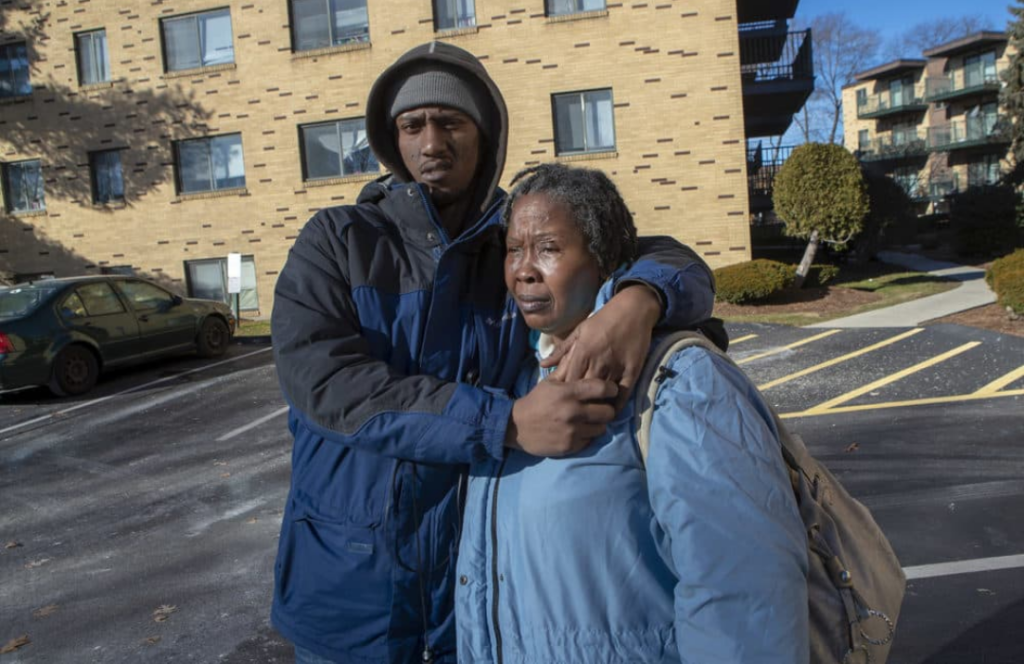The Section 8 housing program works with a number of very low income individuals and households who need rental assistance in almost all of the states in the US. It was made a part of the Housing Act of 1937 and subsidizes private landlords for eligible contract owners. The program is administered by Public Housing Agencies that operate the housing assistance programs at local levels. The Office of Housing in the Department of Housing and Urban Development (HUD) establishes federal program rules and regulations.
38 percent of the rental assistance in 2022 was granted through the Section 8 voucher program to an estimated 2.3 million households and families as part of the 5.2 million who received some form of assistance. Recipients are therefore able to find alternative living arrangements within the private rental market, so long as they meet the standards stated by HUD. For voucher recipients, few challenges arise. They often have their vouchers for a period of 4-6 weeks before they expire, making it necessary for them to locate suitable living within that time frame. Waitlists for Section 8 can stretch for decades and can last for above twenty years due to high demand and limited resources, making it untenable for most people. Despite this problem, Section 8 assistance reaches a wide variety of people, including the expected groups that receive aid, and it has been the cornerstone address for those who are homeless, require senior housing, or rural development.
Key Features of Section 8 Housing
As with any other program, Section 8 is guided by Fair Market Rents (FMRs) and relies on HUD to set voucher amounts. In the last couple of years, the Small Area Fair Market Rents (SAFMRs) has been established, which enhances the efficiency of rent calculations on a per zip code basis for big cities. This is helpful for rural areas since it eases the accessibility of housing and encourages urban planning and sustainability.
It is important to note that there is no compulsion for landlords to take part in the project, but income-based discrimination policies are in place in some states and regions. As a result, Section 8 tenants are more commonly accepted, which promotes diversity in urban housing markets. In some cases, Section 8 vouchers are permitted to be used as part of homebuyer assistance programs, but this is subject to restrictions in terms of location and eligibility.
A Historical Perspective on Section 8
Federal assistance in housing was legislated during the time of the Great Depression to cope with the acute deficit in housing availability. Even though by the 1960s and 1970, subsidy programs were formed with the aim of increasing the availability of affordable housing and assisting families pay their rent. The HUD Act of 1970 was a great landmark in introducing new experimental schemes such as the EHAP – Experimental Housing Allowance Program and Rent Supplements for Moderate Income Families.
In 1974, the United States Congress enacted the Housing and Community Development Act, which paved the way for the Section 8 Program. This law recognized that the core problem that low income families face is the percentage of their income spent on rent rather than the condition of the house itself. The Section 8 embraced this new paradigm by allowing renters to pay out of their own pockets about thirty percent of their wages and the government taking care of the rest.
Primarily, Section 8 began with three subprograms: New Construction, Significant Rehabilitation, and Existing Housing Certificate Programs. Later on, additional programs were developed including the Moderate Rehabilitation Program and the Voucher Program in 1978 and 1983 respectively, corresponding to the changing demands of housing.
Innovations and Expansion: Setting Out to Solve the Problem of Homelessness as well as the Needs of Veterans
The expansion of the impact of Section 8 was particularly notable with the establishment of the HUD-Veterans Affairs Supportive Housing (HUD-VASH) program in 2008. This initiative, which is funded by the Section 8(o)(19) clause, integrates rental assistance and clinical case management services for veterans suffering from homelessness. The integration of Housing First principles into HUD-VASH program puts tackling homelessness among veterans at the top of the helping hand pyramid.
Section 8 in Urban Development and Planning
In addition to providing individual assistance, the program has an impact on urban development and planning in a wider context. Like any other program, Section 8 works in support of low-income families by enhancing socio-economic mobility through access to a variety of neighborhoods and fostering inclusive communities. This focus on sustainability resonates with the aims of contemporary urban planners to mitigate crises such as shortage of affordable housing, gentrification, or the proliferation of greenwashing in housing development.
Obstacles and Advantages for Landlords
There is no obligation for landlords to accept Section 8 tenants, and some might be reluctant to participate due to a fear of government inspections or because they are not allowed to set rents higher than FMR. Nevertheless, many landlords prefer Section 8 vouchers due to the advantage of a huge market of renters, guaranteed payments from the PHA, and tenants wanting to keep the property in a condition that meets HUD standards. In some states, it is unlawful to discriminate against tenants who participate in the Section 8 program or to say that a ‘No Section 8’ policy is in place.
Application Process
Individuals may apply for Section 8 tenancy through their local PHAs. While the procedure allows for the use of vouchers in any part of the nation after twelve months of residency, the program is oversubscribed. It is common to find waiting lists for vouchers stretching for several years with thousands of people applying. Some PHAs set aside certain quotas or preference systems for groups such as veterans, the elderly, disabled people and locals.
Impact on Urban Development
Section 8 aids in urban development and ecological sustainability by guaranteeing appropriate housing conditions for the benefit of tenants and the community. With the enhancement of private rented accommodation, the program serves the vital function of a homelessness strategy in urban planning as well as assisting with first time home buyer schemes and senior housing initiatives.
The program is also consistent with housing first principles which stress that stable housing should be acquired immediately in order to tackle more encompassing social and economic issues. Be it through tenant-based vouchers or project-based assistance, Section 8 remains a staple of national housing strategies that seek to encourage more inclusive, sustainable and healthy communities.

Fair Market Rents and Section 8 Housing
The jurisdictional limits on the rental rates landlords can charge for units leased under the Section 8 voucher program are determined by Fair Market Rents (FMRs). FMRs are the gross rental rates and stipulate the threshold below which a landlord will not set rent on a unit. FMRs are set using information obtained from the American Community Survey and, in addition to other factors, is adjusted for recent movers, the Consumer Price Index (CPI), and anticipated lettings trends. The U.S. Department of Housing and Urban Development (HUD) Measures these to check the affordability in other housing programs such as Section 8, senior housing, or first-time home buyer programs. FMRs do include most utility costs like heating and electricity, but do exclude telephone, cable, or internet services. The data on FMRs can be found in the HUD’s database.
Fair Market Rent Small Area and Urban Development
The Small Area Fair Market Rent (SAFMRs) initiative which was established by the HUD in 2017, improves the previous FMR scheme by analyzing rents per zip code rather than on an entire metropolitan area basis. This project entails a set of actions and strategic plans to promote and foster a positive change within certain areas of a community or society that will ultimately create a need for sustainability. It also seeks to tackle the issue of homelessness and assist in Housing First movement. There has also been anticipation of a SAFMRs voucher policy that will ease the market pressure of limiting voucher recipients to physical locations that inhibit balanced urban growth. The initial evaluations on SAFMRs showed differing outcomes with the metropolitan regions indicating the gap of long ways out studies that need to be conducted on the housing problems for the particular regions.
Self Sufficency Support Earned Income Disallowance
‘Self sufficiency’ is one of the goals that Section 8 housing programs strive to accomplish with help of participants owing the Earned Income Disallowance (EID) policy. It allows people to have their rent put on hold when levels increase because of work. This policy was set in place due to the Quality Housing and Work Responsibility Act of 1998 in order to fully encourage employment participation without the fear of losing an abode. This money missing from the EID is a crucial piece for self-sufficient housing programs tackling systematic poverty in able to create an existive housing problem.
Examination of Section 8 and Urban Dynamics
There is a debate surrounding section 8 housing programs and their influence on urban growth and social relations. Section 8 housing programs have been described by Howard Husock as a factor for shifting social problems from the inner city to suburbs and in turn risking the wellbeing of communities. Rosin claims that crime migration is a result of the program, though these accusations are considered weak. The Moving to Opportunity experiment found no evidence that participants of section 8 applied in general raised crime rates within the neighborhoods but emphasized shifts in economics and demographics as more relevant causes.
Placement Specialists: The Missing Link between Town Planning and Economic Development
Housing placement specialists have proven to be a key component to the success of Section 8 voucher program implementations in tight renting markets. Matthew Marr shows the positive results of these specialists in Los Angeles, where they serve as brokers between renters and landlords. Some of the apprehensive behavior of the landlords is due to over burdening policies and stereotypes of those who use the vouchers. Housing placement specialists increase the rate of successful submissions of section 8 applications along with the implementation of section 8 urban housing policies.
Section 8 and Housing Strategies: Towards Achieving Sustainability
In addition to more targeted approaches like senior housing and first home buyer programs, Section 8 programs and SAFMRs are initiatives designed to achieve housing sustainability and equity. These programs assist in creating social programs at the municipal level and target resolving housing needs, while also contributing to the nasal wellbeing of the society’s economy enabling stability for the future. Section 8 remains one of the most quintessential building blocks for urban development in the U.S. whether it is addressing homelessness via the housing-first approach or fostering community development.
Final Remarks
Section 8 continues to be one significant instrument for tackling America’s housing problem. The program mitigating urban homelessness while providing for the aged and developing housing units has singlehandedly spearheaded positive change for disenfranchised people seeking social justice. In spite of nimble resources and long waiting queues, Section 8 has been successful in proving that targeted approaches foster equitable access, social progress, urban living standards, and sustainability in the cities. As incremental attempts are striving to broaden the scope of Section 8, the justification of needing housing as a right is put forth which is without a doubt rational.

